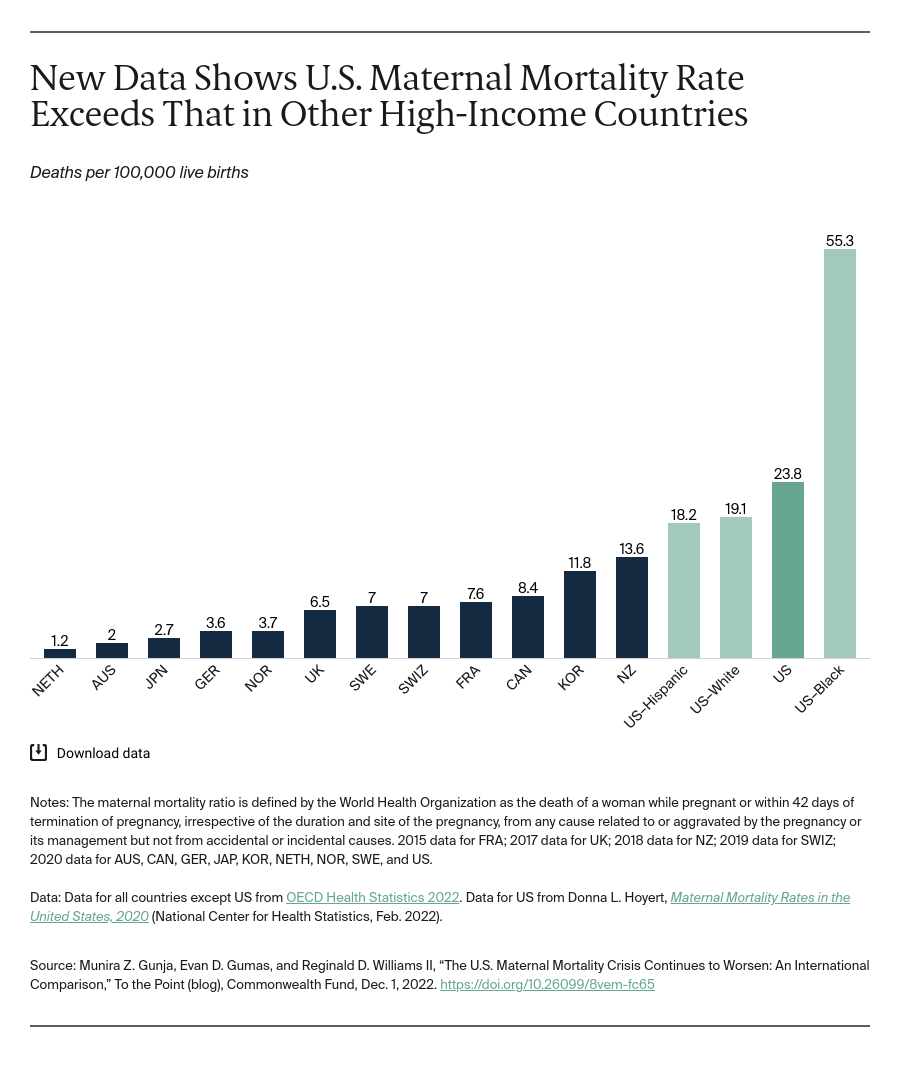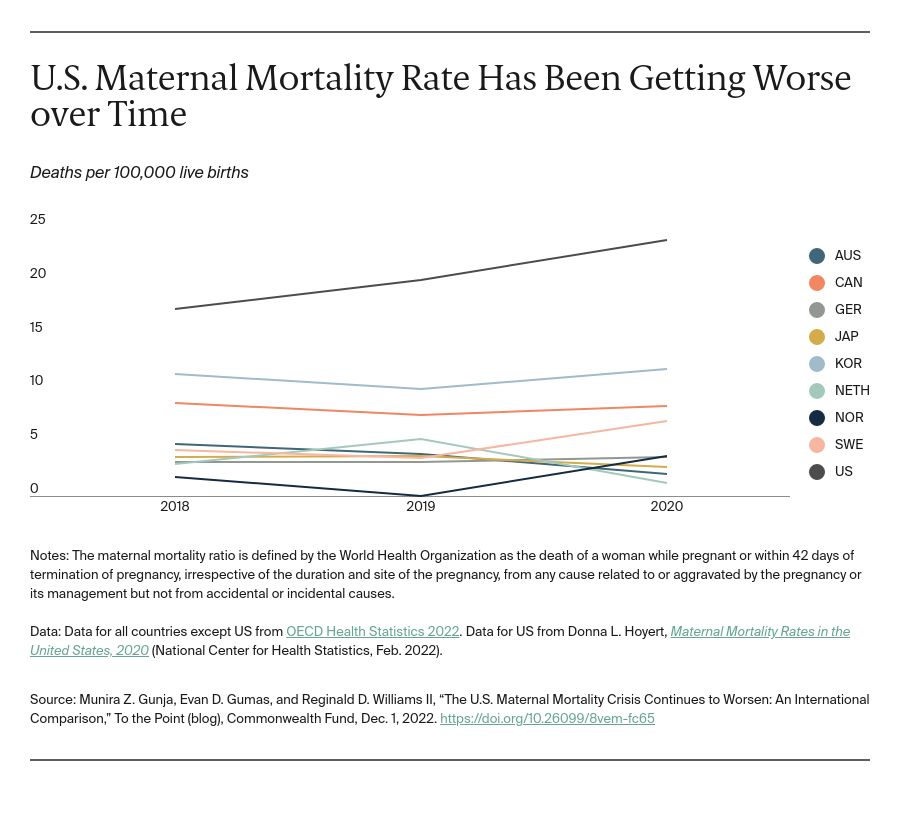The U.S. maternal mortality rate has been on the rise since 2000 and has spiked in recent years. The COVID-19 pandemic challenged health systems across the world and may have played a role in limiting women’s access to health care. Consistent with this finding, when looking at countries where maternal mortality data are available since 2018, we find the U.S. is not alone. The maternal death rate increased in six of the nine countries shown. It is yet to be seen whether this trend in maternal deaths continued throughout the pandemic.
The maternal mortality rate dropped in Australia, Japan, and the Netherlands, although there is currently insufficient research to understand which policy levers may have caused these decreases. Research has shown that in the Netherlands there was an increase in home births and vaginal deliveries and a decrease in cesarean sections (both planned and emergency) during the pandemic. These practices may have contributed to lowering maternal deaths.
Focusing on Coverage and Postpartum Support
There are clear opportunities to put the U.S. on par with other countries that have implemented policies to help reduce maternal deaths. These strategies include: ensuring all women have access to free or affordable primary care; comprehensive reproductive health care before, during, and after pregnancy; a maternal health care workforce mainly comprising midwives covered by insurance; and comprehensive postpartum support.
The U.S. is the only country in this analysis that does not provide universal health care, leaving nearly 8 million women of reproductive age uninsured. Eleven states have yet to expand their Medicaid programs, leaving hundreds of thousands of women of reproductive age — who are disproportionately Black — in the Medicaid coverage gap and vulnerable to the current provision that allows states to end coverage 60 days postpartum.
The Biden administration’s proposal to extend Medicaid coverage to one year postpartum would provide millions of lower-income women with needed health care during the postpartum period, a time when many women die because of lack of adequate care. Comprehensive reproductive health coverage and other proposals from the administration, including expanding and diversifying the maternal care workforce, could decrease the number of preventable deaths and also reduce racial and ethnic inequities in U.S. maternal deaths.





